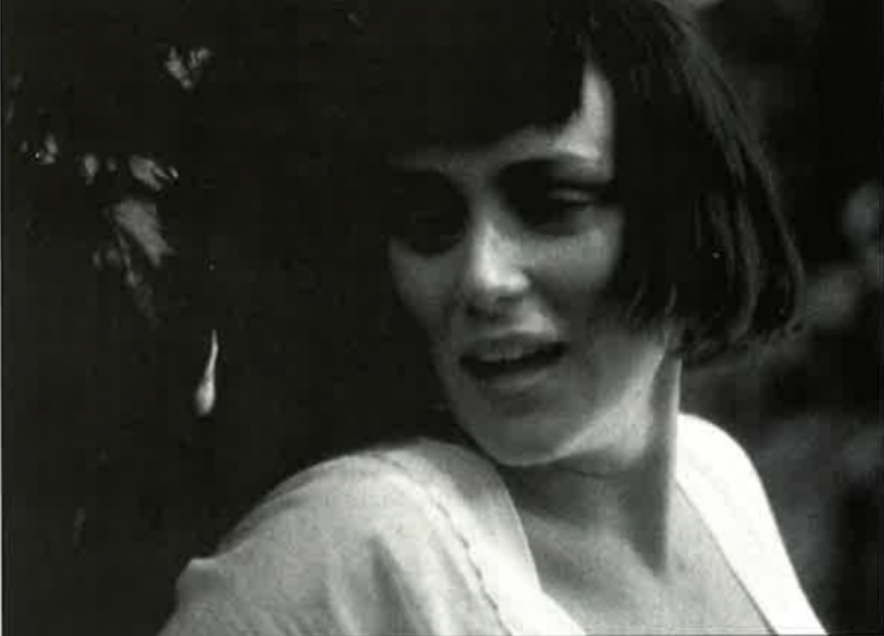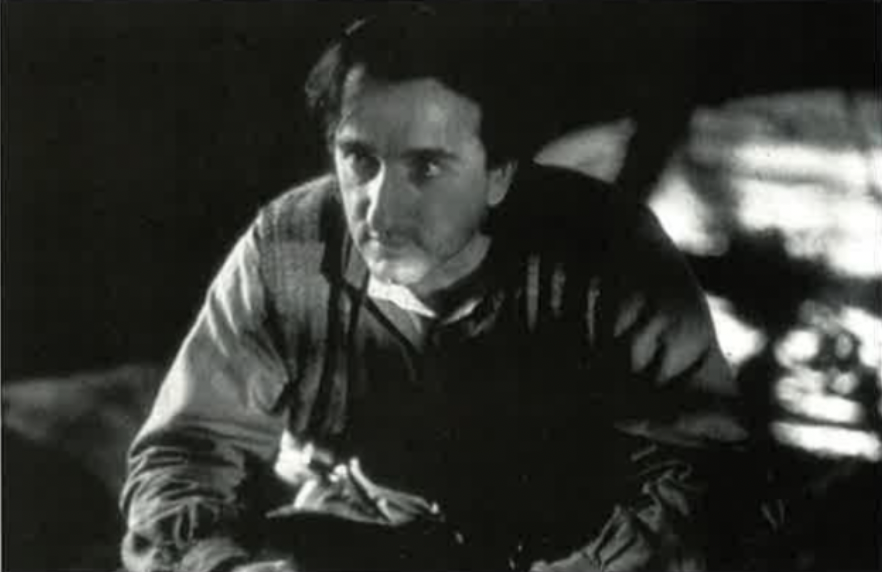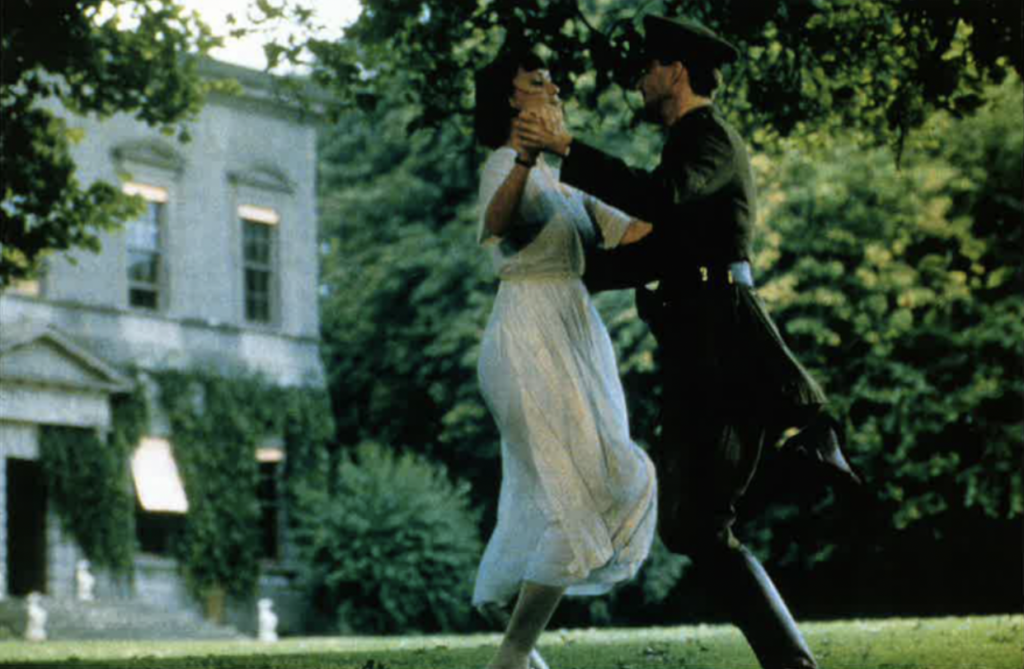The spirit of Chekhov hovers over the Irish countryside in The Last September. Director Deborah Warner and screenwriter John Banville bring a powerfully elliptical sense of inevitable loss to this film about the waning days of the Anglo-Irish aristocracy. Based on the 1929 novel by Irish writer Elizabeth Bowen, The Last September is set on a country estate in Cork in 1920 during the Black and Tan War. With a sensual visual texture that conveys the metaphorical feeling of an impending storm, it depicts the end of the Ascendancy with tragic poignancy.
The insular, anachronistic existence of an Anglo-Irish clan headed by Lady Myra and Sir Richard Naylor (Maggie Smith and Michael Gambon) is periodically interrupted by violent events they try their best to overlook. But the historical upheavals soon reach inside the grounds of the estate. The dramatic conflict is encapsulated in the love life of Lois Farquar (Keeley Hawes), a ferociously confused young woman simultaneously carrying on a romance with a British officer (David Tennant) and having furtive sexual encounters with an IRA man (Gary Lydon) she is hiding in a mill on the estate.
This melodramatic but suggestive metaphor for the divided loyalties of the Anglo-Irish is interwoven with more delicately shaded conflicts among the family members and their guests, each of whom has a different level of delusion toward the end of their way of life. One character complains, “Everything’s so complex over here — no wonder we poor English find it so baffling.” The most sophisticated and worldly of the group, Marda Norton (Fiona Shaw), dryly observes, “Perhaps to be shot would not be so bad — it would solve so many things.”
Much of the film’s dark and subtle humor comes from the characters’ stubborn attempts at denial of their historical circumstances. Lady Myra and Sir Richard protect their fragile psyches by trying to carry on as if little has changed since the end of the nineteenth century. Sir Richard’s detachment from reality is more extreme — he is as dotty as one of those grand old Tory characters played by the late Sir Ralph Richardson — but Lady Myra’s psychological deterioration, which takes place before our eyes, is more poignant. She evolves from a foolish old snob into a character of genuine tragic dignity as the fatal climax of the story, cynically set in motion by Sir Richard, seems to visibly strip away her sense of place and self.
The Last September pointedly explores the complex issue of identity and allegiance among the Anglo-Irish. With apt historical irony, these long-established colonizers are described as a “tribe.”
To a degree that dumbfounds the British soldiers visiting their estate, these Anglo-Irish people see themselves not so much as compatriots of the British but primarily as Irish men and women. Lady Myra points out with unconsciously double-barreled condescension, “Of course, our people do think — not at all like the English.”
Deborah Warner made her feature film directing debut with The Last September, which premiered in 1999 at the Cannes Film Festival. A noted director of British theater and opera, she previously directed three television adaptations of her stage work, all starring Fiona Shaw. Warner already demonstrates a full-blown command of cinematic mise-en-scéne in The Last September. Working with the masterful cinematographer Slawomir Idziak, who is best known for his work with the late director Krzystof Kieslowski, Warner makes the look and feel of this film an integral part of its themes.

The profligate succession of stunningly beautiful images is suffused with rich, deep colors, lit by the fading glow of late-afternoon sunlight. Many scenes are filmed from inside the “Big House” looking out toward the countryside, with the images usually much darker in the foreground interiors. The frequent use of frames within the frame (windows, doors, and other objects) conveys a simultaneous feeling of anxious voyeurism and emotional detachment. These tensions in the imagery suggest that the house the family considers “safe,” their refuge from the political realities of the changing world outside, is but a fragile illusion. The outside world cannot be ignored much longer, nor can it be contained.
In its multilayered portrait of a feudal society on the verge of collapse, The Last September evokes not only Chekhov’ s portraits of fading Russian aristocracy in The Three Sisters and The Cherry Orchard, it also dares comparison with one of the greatest films ever made, Jean Renoir’s The Rules of the Game.
That 1939 French classic deals with decadent aristocrats at a country estate on the eve of World War II. Renoir similarly concentrates on the defiant frivolity of upper-class amusements and the barely controllable dangers lurking beneath the surface. Both The Rules of the Game and The Last September examine the distracting effects of romantic folly, role-playing, and self-consciousness, while revolving dramatically around the sacrificial death of a heroic outsider.

The Last September is far more studied and less emotionally devastating than Renoir’s masterpiece. But while Warner’s film falls short of its model, that’s nothing to be ashamed of, for it’s refreshing to see a film with such high aspirations.
The screenplay by Irish novelist John Banville is best when it is most oblique. Sometimes it spells out its themes too explicitly, as in the opening title that declares, “This is the story of the end of a world.” The filmmakers should trust their audience to figure this out for themselves. Conversations that dance around the subject or seemingly ignore it entirely give the film greater emotional resonance than scenes of characters self-consciously expounding on their situations.
But these are relatively minor flaws in a film that movingly conjures up the tragic futility of a bygone world. Advising his fellow writers to “make” reality rather than describe it, Ernest Hemingway said that the way to do so was to convey “the people, the places, and how the weather was.” The dark, lowering sky overshadowing the people and the places in The Last September with such pregnant foreboding follows that dictum precisely.


Leave a Reply